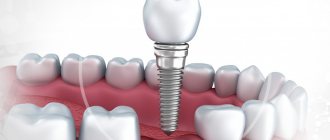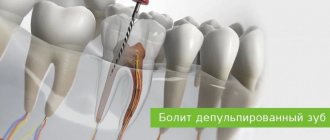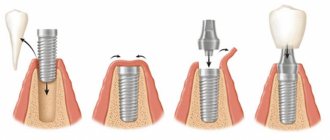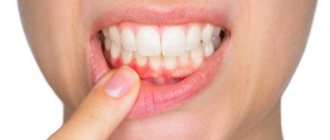Modern dental prosthetics can completely restore the aesthetics of the dentition and its chewing functions. People may face the need for surgical removal at any age. Among the achievements of orthopedic dentistry, anyone can choose a suitable replacement option. Dental prostheses are produced in different types, differing in the material of manufacture, cost, and service life. For the production of structures, alloys of precious metals, ceramics, special plastics, polymers, nylon and other types of raw materials are used.
There are two types of prosthetics after tooth extraction:
- Removable dental structures can be removed and put on by the patient as needed. The products are attached to the supporting teeth using hooks or micro-locks. For edentulous patients, models are used that are fixed to the gums using suction cups or a special gel.
- Fixed dentures are installed in the jaw (implants) or attached to supporting teeth (bridges).
Each category is represented by several options. Among them, dentists select the appropriate solution based on the condition of the oral cavity and the health of the patient.
Depending on the service life of the products, temporary and permanent dentures are distinguished. Models of the first type are designed to last only a few months. The products are used to temporarily close the postoperative gap.
Fixed dentures remain the most popular way to restore the beauty of a smile. This replacement option is more convenient compared to removable devices. It is easy to care for and helps preserve the natural functions of the dental system. Permanent prosthetics are performed in different ways:
- The installation of crowns made of metal ceramics or a metal alloy is performed on a previously prepared tooth. This method is used if the root is intact, but the top is destroyed.
- Implantation of one or more teeth involves inserting an artificial root into the jaw. A permanent or temporary crown is placed on it. This method is indicated for complete or partial edentia. Sometimes doctors use an implant as a support for a bridge.
- Bridges are placed after the amputation of several teeth located nearby.
- Adhesive structures are secured using an adhesive solution. In this case, there is no need to depulp the adjacent teeth. This restoration method is one of the most technologically advanced in orthopedic dentistry.
Prosthetics after tooth extraction and indications for the procedure
Installation of a denture allows you to completely restore the functional and aesthetic properties of the jaw apparatus. The indication for the procedure is single or multiple damage to the jaw as a result of trauma, surgical amputation due to advanced caries, or other diseases of the oral cavity.
If the crown is partially destroyed, a microprosthesis is installed instead of the usual one. This group includes inlays, veneers and ultraneers. The products effectively solve aesthetic problems with minimal trauma to natural bone and gum tissue.
Cost of services
The cost of services depends on:
- The number of missing elements of the dentition.
- The type of prosthesis or implants chosen.
- Difficulties in carrying out all manipulations, etc.
We don't inflate prices. Thanks to this, restoration is possible even on a limited budget. The doctor will draw up a financial treatment plan in advance. This will allow you to plan your expenses. In addition, we provide discounts and run special promotions. Thanks to this you can save money.
Contraindications
Thanks to the variety of techniques for each person, you can choose a way to restore the beauty of your smile. All dentures have indications for use and contraindications. The decision to replace a lost element after amputation is made by the attending physician based on the results of dental diagnostics, taking into account the age and condition of the body.
As for the general reasons, experts do not recommend performing surgical procedures if you are pregnant, undergoing rehabilitation after a serious illness or complex operation, or are sick with ARVI. You should not install implants or dentures during periods of exacerbation of chronic diseases, exhaustion or acute stress.
Tell your doctor if you are allergic to anesthetics or take any medications. Some drugs affect blood clotting and the rate of tissue regeneration. This can create problems during the procedure and while the wound is healing.
Often, poor oral hygiene is an obstacle to treatment. This temporary contraindication can be eliminated through therapeutic measures.
When can an implant be placed, and when should an implant not be placed?
Let's start with problems when implantation was postponed
Let’s not go into the reasons now - either due to the patient’s ignorance, or he is lazy, or there is fear of the operation. It doesn't matter now. The main thing is that there is a time delay in installing the implant. Let's understand where exactly this problem arises if the patient nevertheless decides to postpone implantation.
The very phrase “bone tissue has resolved” does not sound scary and does not frighten a person who does not understand dentistry.
What are the consequences and dangers of bone tissue resorption?
Let’s say we can consider the overall picture: if a patient has no teeth, then he chews food worse, therefore, he has worse digestion, etc. and so on. That is, the patient’s body as a whole suffers more. And if you look in particular, that is, into the oral cavity, then it is easier - it’s just inconvenient to chew food. Although some people manage to chew food without teeth at all. How they manage to do this is difficult to say.
In general, a person adapts to many problems
First he gets used to the absence of one tooth, then two or three, etc. then it loses even more, chewing food becomes not such an important factor. But in vain.
That is, a person is adapting to the created conditions with his teeth, or more precisely, to their absence. And then, when he gets all his teeth back - during the restoration of both the upper and lower jaws, the person becomes... unusual for chewing! They even ask again: “How can I chew it now? I’m used to doing it differently.” It sounds quite anecdotal, but the patient is not laughing at this moment; he has to learn to chew food normally again.
What other factor can attract the attention of the patient, especially women?
, regarding the situation with a missing tooth?
The aesthetics factor of the anterior teeth is very important
If you lose one or two teeth in the chewing department, no one will notice a violation of aesthetics. And if in the anterior region, then yes, the speed of decision-making about installing an implant and further prosthetics is very high, since the patient wants to eliminate a visible dental defect as soon as possible.
Plus, due to the absence of front teeth, there is a retraction of soft tissues, which is visible to the eyes of strangers.
For some reason, patients almost always postpone restoration of the chewing group of teeth through implantation “for later,” although this is wrong
.
It is necessary to restore the chewing area so that it bears the chewing load. If the chewing zone is not restored, then, oddly enough, the frontal, anterior zone of the teeth begins to suffer first.
The front teeth take the load of the chewing teeth and become overloaded: the front teeth begin to bear a load many times greater than what Nature assigned them. As a result of such maximum loads, the ligaments are stretched and the teeth become loose. And at this moment the patient begins to ask himself (and the doctor): “Why are my teeth loose?” And he even diagnoses himself - periodontal disease or periodontitis. But in fact, the patient does not have any periodontal disease or periodontitis; the chewing teeth just need to be restored.
When a patient comes to me at the German Center for aesthetics, then always, if he has a lack of chewing teeth or there is a functional deficiency (that is, crowns that are not restored correctly, chipped crowns, teeth that are destroyed or fillings that are not restored very well), then I always I draw his attention, telling him that first he needs to restore his chewing teeth.
See how this happens in the example of one patient:
And only then – we begin to talk about restoring a smile, about aesthetics:
Because, having made the chewing teeth, we will move the load to its “native” place, normalize the load in the frontal region, and the work that we will then do with the front teeth - veneers, crowns - this work will last happily ever after for many years.
Consent to dental implantation “immediately” and “not immediately”
What happens if the patient:
- immediately agrees to install the implant,
- Will he agree to have an implant installed after some time?
How is the implant installed in these cases? The difference in implant placement in these cases is large
.
Case 1.
If a patient comes and says: “I have a bad toothache and I want to get an implant,” you must first understand why his tooth hurts. If this tooth hurts because it is mobile, and for some reason the mobility affects the gums - that is, the gums actually hurt, this is one case.
Case 2.
But if the tooth hurts, and a large cyst or abscess is identified in the area of the tooth, then this is a different case. Why does an abscess form? It is formed due to the destruction of bone tissue, due to the localization of infection in this destroyed area. And this infection was activated, and a purulent process had already appeared. And this is exactly what hurts. Naturally, in this case, the implant cannot be installed immediately. Because the surrounding tissues are infected, and even if everything is cleaned well and an implant is placed (if there is somewhere to place it, if the bone tissue is not completely destroyed), then there is a high probability of implant rejection. The implant may not take root and may not generate osteogeneration, because the body has not yet stabilized the area of inflammation and has not brought it “in order.” The processes of bone tissue regeneration and the processes of fouling of the implant with bone tissue will not be carried out; the body will simply reject the implant as a foreign body.
Case 3.
If the patient comes, and for some reason he needs to have a tooth removed, and there is an infection (granuloma or small cyst).
Dental implantation if a cyst is detected
People come and say: “I was diagnosed with a cyst. What to do?". The concept of a cyst is very different. First it is a granuloma, then it is a cystogranuloma, and only then it is a cyst. It depends on the size, we won’t go into details now. If this is an inactive phase, that is, if this infection has not yet turned into a purulent infection, then by removing the tooth and removing such a “cyst” or granuloma, and carrying out antiseptic treatment of the place where this focus was located, then in this case you can immediately install an implant . In this situation, it is possible to use a laser. We use a laser to go through and disinfect canals and bone structures.
The only issue that arises is replacing the removed tissue with artificial one. But this all depends on the volume of the defect that formed after removal of the cyst or granuloma.
That is, if the patient has an active phase
inflammation, then an implant
cannot
.
If the inactive phase
, then the tooth implantation after removal
will be successful
.
But there is also a dependence on the location of the granuloma (cyst, cystogranuloma) in relation to the bone tissue. It happens that in the frontal region the anterior bone wall is simply destroyed by this pathogenic structure. And there is virtually no bone tissue. She is not physically there. In this case, you need to perform bone grafting and it takes time for this wall to recover.
Usually, after removal, after inflammation has subsided, it takes at least two months for the body to recover.
When is it not necessary to place an implant?
Such situations 100% include the area of wisdom teeth; removal of “eights” does not require the installation of implants
Installation of the prosthesis immediately after removal (within 24 hours)
Clients are always interested in how many days after an injury or surgery they can get dentures. Dentistry has express methods for instantly eliminating smile defects. There is no need to hide an ugly gap from others and experience discomfort when communicating! We are talking about simultaneous implantation, which is performed in one stage. The dentist installs an artificial root into the resulting hole and immediately puts on a crown, which is prepared in advance. It creates a load on the jaw apparatus and prevents atrophy.
Another option is immediate dentures, which are temporary and are designed for 3-4 months of use.
Bridge prosthesis in place of an extracted tooth
The design of a dental bridge consists of the main crowns for replacing missing units and two additional ones for fixing the prosthesis on the jaw. During the treatment process, the doctor grinds down the living teeth and attaches crown caps to them. Advantages of a dental bridge for the patient:
- durable permanent installation;
- affordable price;
- aesthetics.
Flaws:
- Delayed prosthetics. The minimum period when a bridge can be installed after tooth extraction is a month after the operation.
- Grinding healthy units. Physical damage to the integrity of the enamel and partially crowns.
- Excessive load on supporting teeth. And degradation of bone tissue under the overhanging part of the denture.
- Gradual loss of aesthetics and functionality. Due to tissue subsidence, a gap is formed between the denture and the gum, visible when speaking. Also, food particles get into the empty space, which often causes inflammation.
- Fragility. The prosthesis and supporting teeth are usually removed 5-7 years after installation.
Doctors explain not only how long after tooth extraction a bridge can be installed, but also why. 4-8 weeks is a reasonable interval, since the tissue at the site of the lost tooth should be completely restored. Otherwise, there is a risk of changing the shape of the gums under the installed prosthesis, and the likelihood of tissue injury at the time of prosthetics increases.
Expert opinion
Roman Borisovich Alekperov
orthopedic dentist
Experience: 24 years
If you are just planning to visit a surgeon for tooth extraction, consider the option of one-stage implantation. This unique method involves placing an implant into the resulting socket immediately after extraction. No additional manipulations - incisions or detachment of a mucosal flap, as with the classic protocol - are performed. This gentle method will allow you to resolve the issue of tooth restoration immediately at the time of its removal. Important: there are contraindications for immediate implantation! Please clarify the possibility of its use in your case during your consultation.
Terms of treatment and duration of procedures
How quickly the prosthesis is installed depends on the type of orthopedic structure. Thus, temporary dentures can be fixed after 20-30 minutes.
Permanent dentures are placed when the wound heals and the inflammatory process stops, i.e. about three to four weeks from the date of removal. However, prosthetics are required for a maximum of six months, otherwise bone tissue atrophy will then begin and additional sinus lift surgery will be required.
The duration of the procedure also depends on the type of prosthesis used:
- The immediate prosthesis is placed in a few minutes. However, it must be taken into account that it is also necessary to take an impression and then make the structure, which takes at least one day;
- The bridge is installed in no more than two weeks. This period includes the preparation and manufacturing stage of the structure;
- installation of a clasp prosthesis requires about 7-10 days;
- plate structures are installed within 5-10 days;
- The implantation period can range from several days to several months. Everything will depend on the chosen technique.
Gastrointestinal disorders
A person chews food mainly with chewing teeth, which patients are often in no hurry to restore. As a result, food before entering the stomach is crushed less well and is not so abundantly moistened with saliva, which contains enzymes that trigger the process of breaking down nutrients in the oral cavity.
Due to poor chewing, not only gastritis with constant dull pain in the epigastrium can appear, but also cholelithiasis, stool disorders, colitis and other unpleasant diseases.
What is the essence of the methods?
Braces
Braces are orthodontic structures for correcting bites and moving teeth into the correct position. They are an arch with ligatures, dental clasps for fixation, made of metal, plastic, ceramics. There are:
- vestibular - installed on the outside of the teeth;
- lingual - fixed on the inside and not visible to others.
The purpose of the structures is to create pressure to move the tooth into the desired position.
The tooth root is connected to the bone tissue by ligaments. Under pressure they stretch, the crown and root parts move. The duration of treatment is determined individually, ranging from several months to several years.
Implantation
Implantation is a method of replacing a lost tooth with a titanium root and then installing an artificial crown on it.
The operation is performed under local anesthesia or sedation. The gums are peeled off, a hole is drilled in the bone tissue, into which a titanium rod is screwed. The implant is covered with gum, sutured and left alone until it engrafts with the bone. With classic two-stage implantation, the period lasts 3-6 months. After osseointegration, a crown is installed.
If there is not enough bone tissue, it is augmented before or during implantation. If osteoplasty is performed as a separate stage, it will take another 3-6 months for the bone material to heal.
General recommendations
During the period of adaptation to dentures, it is recommended to stop eating solid foods and choose softer foods. It is recommended to eat slowly, cutting food into small pieces. You need to chew food on the right and left sides in turn. To restore chewing skills, pear or apple slices are suitable.
It is necessary to completely avoid chewing gum, toffees, toffees and other viscous, sticky products. They can cause disruption of the fixation of the prosthesis, its breakage, and injury to the mucous membrane.
Do not clean dentures with abrasives, alcohol, alkaline or acidic solutions. The use of hard toothbrushes is not recommended. You should not chew candy, nuts, or seeds.
If you have any doubts or need a professional opinion on a problem with your prosthesis, you can contact the Canadian Center for Innovative Technology and Neuromuscular Therapy for a consultation. Our specialists will answer all your questions!
Alternative to implants
When surgery is not possible, our specialists will offer to replace the lost units with artificial teeth. Atrophic changes in the bone cannot be stopped, but you can count on temporary restoration of chewing function and smile aesthetics. Your doctor will help you choose an alternative to implantation.
Removable dentures
Removable dentures can be complete (in the absence of all teeth) and partial (in the loss of part of the teeth), and are made of hard and flexible materials.
- Lamellar. Suitable for missing all or part of teeth. Can be made of acrylic, acrylic resins, plastic. The material is hard, attached to the gums like a “suction cup” in case of complete edentia or by fixing it to adjacent teeth in case of partial edentia. The advantages of the design are an affordable price, the possibility of relocation in case of bone subsidence and repair in case of breakage. Disadvantages - unreliable fixation, mucosal injuries, chafing, instability under loads, dietary restrictions, service life 3-7 years.
- Flexible. Used for partial or complete absence of teeth. Dentures made of nylon are smaller in size, are better fixed, and rub less, but over time these qualities become disadvantages - the base stretches, and a person experiences pain when chewing hard foods. Prostheses made from Acri-Free material are considered more comfortable and durable - they are moderately flexible, elastic, do not deform, and do not cause allergies. The service life of flexible prostheses is 5-8 years.
- Bugelnye. Suitable for replacing segmental defects, they are based on a metal arch and are fixed using hooks, locks or telescopic crowns. Durable, distribute loads better. Disadvantages - accelerated wear of support units. Service life - 7-10 years.
Dental bridges
Bridges are permanent orthopedic structures that are installed in the absence of one to four teeth in a row. The method involves fixing welded artificial crowns, which are installed on ground abutment teeth on either side of the missing one. Therefore, such prosthetics are not suitable in the absence of the outermost teeth in the row (end defect) and in cases of complete edentia.
Pros: strength, resistance to stress, aesthetics. Disadvantages - just like removable dentures, they do not stop bone tissue atrophy, require proper preparation of neighboring units, and accelerate their wear.
To eliminate defects in the smile area, ceramic and zirconium bridges are used. For prosthetic restoration of molars and premolars, metal-ceramic bridges can be installed.
Combined prosthetics
For isolated defects, removable and fixed prosthetics are combined. For example, single defects are eliminated with bridges, and a removable structure is installed for segmental and disparate defects.
Mini implantation
The use of miniature implants with a diameter of up to 2.5 mm makes it possible to more firmly secure a complete removable structure. Mini implants can be installed for moderate bone deficiency. They are fixed in the gum, practically without going deep into the bone. Cost less than classic artificial roots.
The prosthesis is secured using a locking mechanism on ball-shaped abutments. You can use the patient's prosthesis, which he wore before the installation of mini-implants - add an attachment mechanism.
The method makes it possible to create conditions for more reliable fixation of a conventional removable denture, however, it cannot be called a full-fledged alternative to classical implants due to less resistance to loads and rapid wear of the locking mechanisms.
Orthodontic treatment
If there are no lateral units, the doctor may suggest eliminating the defect by moving the remaining teeth. Treatment is carried out after a thorough diagnosis and the condition of the bone tissue is satisfactory. To change the position of teeth in the defect area, braces are installed. The advantage of the method is that it does not require surgery. The downside is the presence of contraindications, it is difficult to predict the result and duration of treatment.
How does a doctor restore a tooth?
If the tooth is intact, the doctor will suggest replantation. To begin with, radiography is performed, followed by the following procedures:
- Thorough antiseptic treatment of the oral cavity as a whole.
- Installing the unit in its original place. Localization is not carried out visually, but with the help of repeated x-rays.
- The edges of the hole are sutured.
- To secure the unit in position, a dental splint is required.
- The victim is sent home and antibiotics, anti-inflammatory drugs or painkillers may be prescribed.
- After a couple of days, you need to visit the dentist again. The healing of the tooth is assessed.
- If necessary, the doctor adjusts the splint.
- Complete engraftment will not occur quickly; it usually takes from 3 to 6 months. During the specified time, the unit remains mobile, so you should be especially careful and follow all medical recommendations.
- After final healing, the splint is removed.
Which way is better
Despite the variety of modern prosthetics, implantation is considered the best way to restore lost teeth. The main advantages of the surgical method:
- the result lasts for 10 years;
- original materials and protocols are guaranteed for life;
- bone atrophy stops;
- the prosthesis on implants is securely fixed;
- the risk of complications is minimal;
- artificial teeth on implants look and feel like natural teeth.











